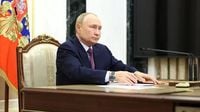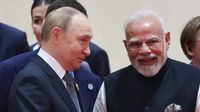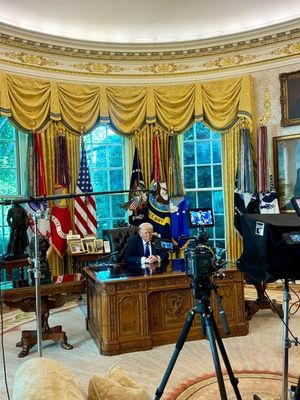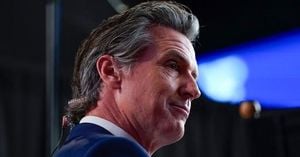Russian President Vladimir Putin’s upcoming visit to New Delhi has become the focal point of a high-stakes geopolitical drama, with India’s massive purchases of Russian crude oil drawing intense scrutiny and pressure from Western powers. As global energy markets teeter on the edge and diplomatic rhetoric heats up, the decisions made in New Delhi could ripple across continents—impacting economies from Washington to Moscow and beyond.
On October 2, 2025, at the Valdai Policy Forum in Sochi, Putin didn’t mince words about the mounting U.S. pressure on India to halt its Russian oil imports. According to Russia Today, he declared, “People in India do not forget about this and our relations, I believe. Some 15 years ago, we made an announcement about a privileged strategic partnership, and that is the best description. Prime Minister Modi is a very wise leader who thinks first about his country.” He went on to emphasize, “Will India give up our energy resources? If so, it will incur certain losses. Estimates vary; some say it could be around $9-10 billion. But if it doesn’t refuse, sanctions will be imposed, and the loss will be the same. So why refuse if it also carries domestic political costs? [Indian people] will never allow themselves to be humiliated by anyone. I know Prime Minister [Narendra] Modi, he will also not make any such decisions.”
Putin’s remarks came as the Kremlin confirmed preparations are in “full swing” for his December visit to India, with Foreign Minister Sergey Lavrov scheduled to arrive first to set the stage for a summit. Kremlin spokesman Dmitry Peskov told the press, “Yes, we have finalised the timeframe for India visit of the President. It would take place before the New Year sets in. The preparations for the visit is at full swing.” Lavrov also announced at the United Nations General Assembly that the trip would mark ongoing diplomatic engagement between the two nations.
The heart of the dispute lies in India’s role as the world’s largest buyer of discounted Russian crude. As reported by HDFC SKY, India now sources 36-40% of its oil from Russia, amounting to roughly 1.796 million barrels per day in 2025. This marks a dramatic surge from just 100,000 barrels per day in 2021, prior to the Russia-Ukraine war. The reason? Moscow’s deep discounts after losing Western buyers, and India’s refineries’ ability to process Russia’s medium-sour Urals grade with high efficiency. The Jamnagar refinery alone processes about 1.24 million barrels per day, and India’s total refining capacity stands at 5.2 million barrels per day.
But it’s not just economics—it’s geopolitics. The United States has responded by doubling tariffs on Indian exports, with some sectors like textiles, gems, footwear, and leather now facing rates as high as 50%. The stated goal: to pressure India into reducing its Russian oil intake. Yet India maintains its purchases are compliant with the G7 price cap of $60 per barrel, introduced in 2022, and insists the strategy is about protecting consumers and stabilizing global markets.
Putin, for his part, has been quick to point out what he sees as Western hypocrisy. He noted, “The United States pressures countries like India not to buy Russian energy, while it itself depends on Russia for uranium.” He added that Russia would continue to supply uranium to the U.S. because it suits American interests.
What would happen if India bowed to Western demands and stopped buying Russian oil? The consequences could be seismic. Experts cited by HDFC SKY warn that pulling India’s 1 million barrels per day of Russian crude from the market—almost 1% of global supply—would create a severe shortage. Dr. Sajjid Chinoy of JP Morgan explained that neither OPEC nor U.S. shale could ramp up output quickly enough to fill the gap. The result? Crude prices could soar to $90-100 per barrel, or even higher, triggering inflation and potentially slowing the global economy.
Putin himself warned, “If higher tariffs are imposed on Russia’s trade partners, energy prices worldwide will rise, potentially forcing the US Federal Reserve to keep interest rates high, slowing the US economy.” He also quipped, in a jab at former U.S. President Donald Trump, “If Russia is a paper tiger and yet is constantly engaged in war with NATO, then what is NATO’s status?”
India’s economic calculations are complex. The net annual gain from buying discounted Russian crude is estimated at about $2.5 billion, far lower than some media claims of $10-25 billion, according to brokerage CLSA. The average discount has shrunk from $8.5 per barrel in fiscal year 2024 to just $1.5 per barrel recently, once shipping, insurance, and other costs are factored in. Still, even small price changes have outsized effects: India’s crude import bill for 2023-24 was $132-140 billion. A sudden spike in oil prices would pressure the Reserve Bank of India to juggle inflation control with sustaining GDP growth.
Foreign affairs expert Robinder Sachdev, speaking to ANI, summed up the prevailing sentiment in India: “India or actually any self-respecting nation will not let itself be humiliated. India will never allow itself and we have seen it in the past months. The more pressure is there from the Trump administration on India, the more stronger the Indian government has stood up, the people of India have stood up, the public opinion in India has stood up. So it is counterproductive for the West, for America to pressure India.” He added that India’s continued purchases have helped stabilize global oil markets, and that pushing India to switch suppliers could backfire on U.S. interests by raising global prices and, in turn, U.S. interest rates.
Switching to other suppliers isn’t a simple fix. Middle Eastern oil is largely locked up in long-term contracts, and U.S. crude is a poor fit for Indian refineries. In the first half of 2025, India imported only about 285,000 barrels per day of U.S. oil. West African and South American sources offer some flexibility, but rerouting those barrels would drive up costs and disrupt other markets. The EU’s new, tighter price cap of $47.60 per barrel, effective since September 2, 2025, adds another layer of complexity to Russia-India deals.
Despite the mounting external pressure, most experts expect India to maintain its Russian crude purchases unless there’s a dramatic policy shift or a significant change in trade economics. Indian firms are still issuing tenders for Russian oil, and imports are even expected to rise in the coming months.
Putin’s visit to India, then, is about more than handshakes and photo ops. It’s a test of diplomatic resolve, economic pragmatism, and national pride. Both countries are signaling that their “privileged strategic partnership”—forged over decades—remains resilient, even as global power centers shift and new alliances are tested. As the world watches, the choices made in New Delhi and Moscow will help shape not just oil markets, but the very tenor of East-West relations in the years ahead.





